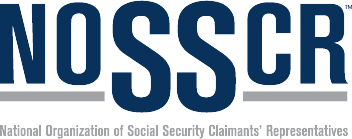The Importance of Ergonomic Assessments in Preventing Work-Related Injuries
In today's fast-paced work environment, the physical well-being of employees often takes a backseat, leading to a surge in work-related injuries. One of the most overlooked yet crucial aspects of workplace safety is ergonomics. Ergonomic assessments, which focus on optimizing the interaction between workers and their environment, play a pivotal role in preventing these injuries. This blog delves into the significance of these assessments, illustrating how they not only safeguard employees but also enhance productivity and save costs for businesses.
Understanding Ergonomics
Ergonomics, at its core, is the study of designing and arranging workspaces so that they fit the people who use them. It's a discipline that merges the boundaries of human anatomy, physiology, psychology, and engineering. The primary goal is to create an environment that complements the capabilities and limitations of the human body, ensuring that tasks, equipment, and the overall environment enhance human performance and well-being.
Imagine a world where every chair you sit in feels tailor-made, where computer screens are at just the right height, and where daily tasks don't leave you with aches and pains. That's the world ergonomics strives to create. It recognizes that each individual has unique needs and seeks to customize workspaces to cater to those specific requirements.
But ergonomics isn't just about physical comfort. It also delves into cognitive aspects, ensuring that the tasks we perform are in sync with our mental processes and capabilities. This means designing interfaces that are intuitive, reducing mental strain, and ensuring that the information we interact with is clear and easily comprehensible.
The Link Between Poor Ergonomics and Work-Related Injuries
The modern workplace, with its array of desks, chairs, and computer setups, might seem relatively harmless at first glance. However, beneath this benign surface lies a potential minefield of hazards, primarily stemming from poor ergonomics. The connection between inadequate ergonomic practices and work-related injuries is both profound and concerning.
When workspaces aren't designed with the human body's needs in mind, it can lead to a range of physical problems. For instance, a chair that doesn't provide proper lumbar support or a computer monitor placed too high or too low can force the body into unnatural postures. Over time, these awkward positions can strain muscles, wear down joints, and place undue pressure on the spine. The result? Conditions like carpal tunnel syndrome, tendonitis, and chronic back pain, to name a few.
But it's not just the physical setup that can be problematic. The nature of tasks, if not aligned with ergonomic principles, can also be detrimental. Repetitive motions, such as typing or assembly line work, without adequate breaks or variation, can lead to repetitive strain injuries. These injuries occur when the same set of muscles is used continuously without sufficient recovery time, leading to inflammation and pain.
Moreover, poor ergonomics doesn't only manifest in immediate pain or discomfort. The effects can be insidious, creeping up over months or even years. What starts as a minor twinge or occasional discomfort can escalate into chronic pain or debilitating conditions that require medical intervention and can significantly impact an individual's quality of life.
Beyond the physical toll, there's also a psychological component. Struggling with discomfort or pain can lead to decreased concentration, increased fatigue, and even mood disorders like depression. When employees are constantly battling discomfort, their overall job satisfaction plummets, and their performance can suffer.
The Benefits of Ergonomic Assessments in the Workplace
Ergonomic assessments, often seen as a proactive approach to workplace design, have become an essential tool for businesses aiming to foster a healthy and productive work environment. These assessments, which evaluate the compatibility between workers and their workspaces, offer a plethora of benefits that extend beyond just physical well-being.
Reduction in Work-Related Injuries
One of the most immediate benefits of ergonomic assessments is the noticeable decrease in work-related injuries. By identifying and rectifying potential hazards, businesses can prevent conditions like carpal tunnel syndrome, back pain, and other musculoskeletal disorders. This not only ensures the well-being of employees but also reduces absenteeism and medical costs.
Enhanced Productivity
A well-designed workspace, tailored to an individual's needs, can significantly boost efficiency. When employees are comfortable and free from distractions caused by discomfort or pain, they can focus better, work faster, and produce higher-quality work.
Cost Savings
While there might be an initial investment involved in ergonomic adjustments, the long-term savings are substantial. Fewer injuries mean reduced medical expenses, less compensation claims, and decreased costs related to training replacement workers. Over time, these savings can far outweigh the initial outlay.
Improved Employee Morale and Retention
Employees who feel that their well-being is a priority are more likely to be satisfied with their jobs. A comfortable work environment can lead to higher job satisfaction, reduced turnover, and a positive workplace culture. When employees see that their employers are taking steps to ensure their comfort, it fosters a sense of loyalty and trust.
Enhanced Quality of Work
Beyond just productivity, the quality of work can also see a marked improvement. Fewer errors, better attention to detail, and increased creativity are all by-products of a workspace that aligns with ergonomic principles.
Promotion of a Safety Culture
Regular ergonomic assessments signal a company's commitment to safety. This can set a precedent, encouraging employees to adopt a safety-first mindset in all their tasks, further reducing the risk of accidents and injuries.
Ergonomic assessments are not just a mere formality or a box to be ticked. They are a strategic investment in the health and prosperity of both employees and the business. In a world where the line between work and life is increasingly blurred, ensuring that workspaces are as comfortable and safe as possible has never been more crucial.
Key Components of an Ergonomic Assessment
An ergonomic assessment is a comprehensive evaluation of a workplace to ensure it is designed to suit the unique needs and capabilities of its users. This assessment is not a one-size-fits-all approach; instead, it delves deep into various facets of the work environment to identify potential hazards and areas of improvement. Here are the key components that make up a thorough ergonomic assessment:
1. Workstation Evaluation
This is often the starting point of any ergonomic assessment. It involves a detailed analysis of the physical setup of the workspace. This includes the height and position of desks, chairs, computer monitors, keyboards, and other essential equipment. The aim is to ensure that each element is positioned to minimize strain and promote a natural posture.
2. Task Analysis
Beyond just the physical setup, it's crucial to understand the nature of tasks performed by the employees. This component evaluates the repetitive motions, force exertions, and postures adopted during various tasks. By understanding these dynamics, recommendations can be made to reduce strain and the risk of repetitive motion injuries.
3. Environmental Factors
The broader environment in which employees work also plays a significant role in their well-being. This includes lighting, noise levels, temperature, and air quality. An ergonomic assessment ensures that these factors are conducive to comfort and productivity.
4. Employee Feedback
One of the most valuable sources of information during an ergonomic assessment is the feedback from the employees themselves. They can provide insights into specific discomforts, pain points, and suggestions for improvement. Engaging employees in the assessment process ensures that the solutions are tailored to their actual needs.
5. Risk Identification
Based on the above components, potential risks and hazards are identified. These could range from the risk of carpal tunnel syndrome due to improper keyboard placement to back pain from inadequate chair support.
6. Recommendations
The culmination of the ergonomic assessment is a set of actionable recommendations. These suggestions are aimed at rectifying identified issues and optimizing the workspace for health, comfort, and efficiency. This could involve equipment adjustments, the introduction of ergonomic tools, or changes in work processes.
7. Follow-up and Review
An ergonomic assessment is not a one-off event. It's essential to periodically review and reassess the workplace, especially after implementing recommendations. This ensures that the changes are effective and allows for adjustments based on feedback and evolving needs.
Implementing Ergonomic Solutions
Ergonomic solutions, when thoughtfully implemented, can transform a workplace from a potential hotbed of physical strain into a haven of comfort and productivity. The journey to a truly ergonomic workspace is not just about purchasing the latest adjustable furniture or ergonomic gadgets; it's a holistic approach that requires careful consideration and adaptation to the unique needs of each environment and its users.
At the heart of this transformation is the understanding that every individual has distinct needs. For instance, the height and positioning of a computer monitor that works for one person might not be suitable for another. Therefore, adjustable furniture, such as height-variable desks and chairs with multiple settings, becomes crucial. These pieces allow employees to tailor their workspaces to their preferences, ensuring that they maintain a natural posture throughout the day.
Beyond furniture, the positioning of equipment plays a pivotal role. Monitors should be at eye level to prevent neck strain, keyboards should be placed to allow a relaxed arm position, and mice should be easily reachable without overextending the arm. Even small adjustments, like the angle of a keyboard or the height of a chair, can have profound effects on comfort and health.
But ergonomic solutions aren't confined to just physical adjustments. Introducing practices like regular breaks and stretches can be equally impactful. Continuous work, especially in repetitive tasks, can lead to muscle fatigue and strain. Encouraging employees to take short breaks, stand up, stretch, or even take a brief walk can rejuvenate the body and mind, reducing the risk of injuries.
Training and education form the backbone of any ergonomic initiative. It's not enough to provide ergonomic tools; employees must be educated on how to use them correctly. Workshops, training sessions, or even simple instructional pamphlets can equip employees with the knowledge to set up their workspaces optimally and adopt practices that promote their well-being.
Conclusion
Ergonomics, often overlooked, stands as a cornerstone of a thriving workplace. By prioritizing the symbiotic relationship between an individual and their work environment, businesses not only safeguard the well-being of their employees but also foster enhanced productivity and morale. In a world where the nuances of our workspaces can profoundly impact our health and efficiency, a commitment to ergonomic principles is not just a choice—it's an imperative for sustainable success.
Cole, Fisher, Cole, O’Keefe + Mahoney is Central California’s leading workers’ compensation and social security disability law firm. With over 30 years of successful experience, we are committed to securing maximum benefits for our clients in the Fresno, California area. Schedule a free consultation today.
© 2025 Cole, Fisher, Cole, O’Keefe + Mahoney
Making a false or fraudulent workers’ compensation claim is a felony subject to up to five years in prison, or a fine of up to $150,000 or double the value of the fraud, whichever is greater, or by both imprisonment and fine.






